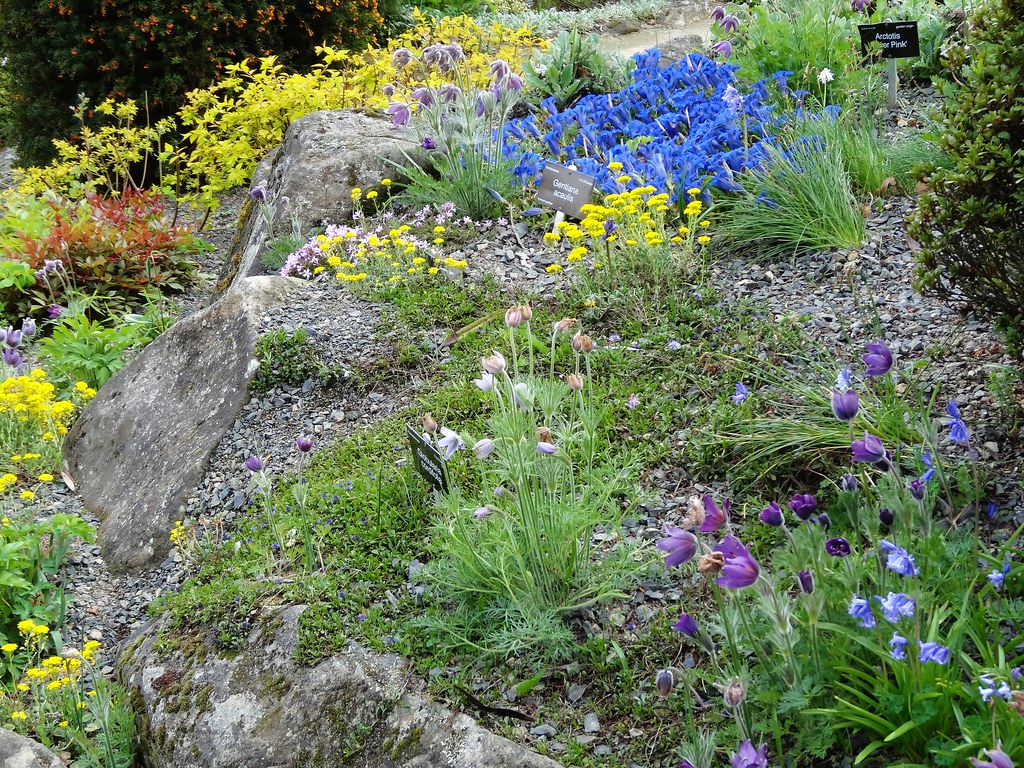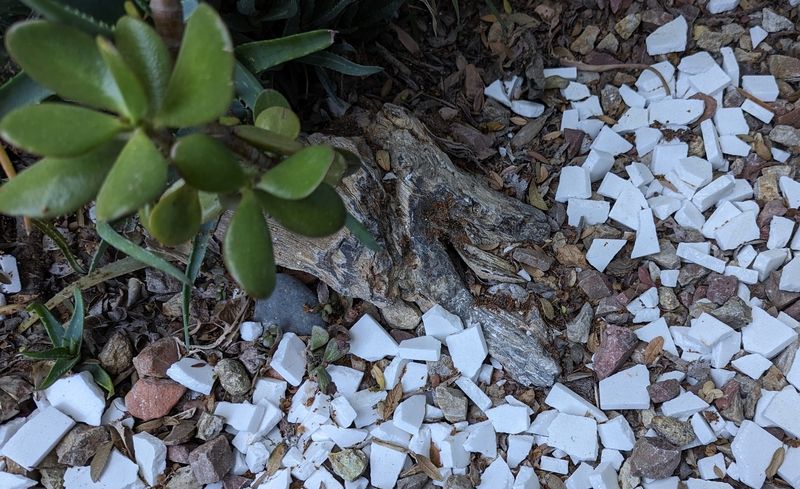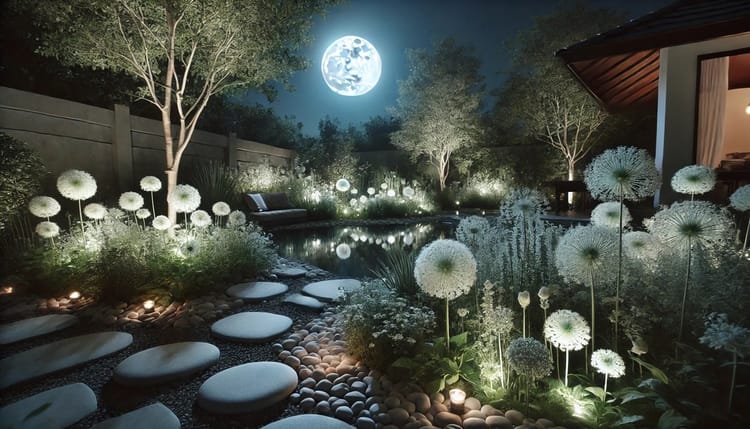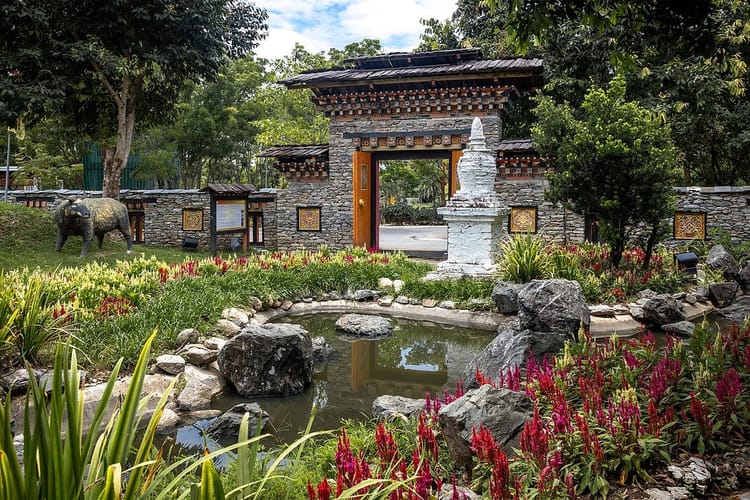Gravelscaping

I have noticed that many home gardens, particularly front gardens, are now using rocks as the main ground covering instead of lawns or traditional mulches like shredded wood or bark chips. I call these types of gardens "Gravelscapes". For homeowners looking for a low-maintenance landscape, gravelscaping seems like a good choice. Gravel, slate, decomposed granite, and other rocky materials do not rapidly decompose, they allow water to soak into soils, do not generally pollute the environment, and do not require cement to hold in place, which makes them appear to be a better choice than other low maintenance ground materials such as pavers or artificial grass.
Is a gravelscape really a good choice for your garden? Sometimes it is, and sometimes it isn't a good choice. Here are 9 concerns you should consider if you are thinking about gravelscaping your garden.
Difficult to remove if you change your mind
Rocks, sand, and decomposed granite are heavy landscaping materials and can't be easily disposed of. Craigslist is full of posts from people who are looking to get rid of landscaping rocks because you can't just throw them out with the trash. While mulch can generally be disposed of through garden waste services provided by your local refuse service, they won't take rocks in any large quantity. Hauling them away to a dump is laborious and expensive.
For this reason, think carefully about using such gravelscape materials as it can be a real hassle if you change your mind. If you have any doubts, try applying it in a small area first before going ahead and covering a large space.
Gravelscaping changes soil conditions
Adding rocky material to your soil will change its composition. A lot of these materials sold at hardware stores contain silica, which will dry your soil. Drainage will change and the temperature of your soil will be different than when organic mulches are used. For this reason, it may negatively affect existing plants, so I generally recommend only doing this part of a complete overhaul of a landscape with plants that are suited to a gravelscape.
The natural cycles of soil can be disrupted
In wild landscapes, the mulch is part of a natural cycle. Leaves, bark, and other organic matter fall and decompose while covering the soil. This then enriches the soil with essential nutrients for the plants and trees. Once you apply a gravelscape-type mulch, organic matter will no longer reach the soil and you will need to clear it to prevent it from forming a composted mat over your gravelscaped areas. This prevents your garden from continuing a natural cycle that may have sustained itself for many years prior to converting to a gravelscape.
Can be disruptive to wildlife
Birds that may have fed on worms and grubs in the soil can no longer do this when it is covered by a gravelscape surface. Frogs will no longer be able to hide themselves in the muddy areas because they can't dig into gravel. While these are negative aspects to gravelscapes, they may conversely provide a solution to the raccoons or other nocturnal invaders that make a mess of your planting beds by digging up your soil in their search of tasty grubs. If you want a wildlife garden, and your local area is not covered in similar rocky surfaces, this choice of ground covering can be highly disruptive to local wildlife.
Heat absorption
Be careful using a gravelscape in a sunny area as these surfaces can absorb a lot of heat, that is then radiated out at night. Studies have found that these surfaces can increase outdoor temperatures by 3°C (5.4°F) during the day, and up to 12°C (22°F) at night, compared to organic ground covers like a lawn. In areas where homes rely on air conditioning for cooling, this can increase energy costs by up to 50%. After realizing this data, many cities in the drought-prone American West no longer allow homeowners to replace their lawns with gravel as part of water-saving rebates.
Some plants prefer gravelscaped mulch
I know this post is sounding quite negative about gravelscapes, however there are some positive aspects. Some plants actually prefer this type of mulch as it mimics their natural habitat. Plants that are native to dry desert or rocky alpine areas will prefer this type of ground cover, and gravel or lava rock can be a useful way to make soil drain faster for plants that are not tolerant of heavy soils.

Alpine Garden in Dunedin Botanic Garden, New Zealand
Can create a good walking surface
Gravel is a very good walking surface when it has been tamped down properly. The rocks hold themselves in place with air gaps to allow water to drain and prevent puddling. Furniture can be easily placed on gravel and kept level without too much effort. A well-installed gravel path can provide a solid yet shock-absorbent surface that requires little maintenance. While an organic mulch can provide similar qualities, a gravelscape is typically easier to keep clean and free of weeds without using any nasty chemicals to maintain it.
Can create a bad walking surface
Gravel is not everyone's cup of tea for a walking surface. The downside to gravel paths is that they can be painful to walk on barefoot. I sometimes use it to prevent cats from going into an area of my own garden so this isn't always a bad thing :). Also, the type of rock used makes a big difference. Rounded rocks like pea gravel and river rocks can shift around making it a bit of a slog to walk on and can easily slide underfoot to cause injury and scatter into other areas. When using gravel for a walkway, you should try to use the more jagged rock that locks into place to prevent movement. When aggregate or decomposed granite is used for a walking surface, it can stick to the soles of your shoes and make a mess in the house.
If you are considering a gravelscape for an area that will receive foot traffic, have a look at our post on Garden Paths for the pros and cons of your material options.
Creates an opportunity to reuse old building materials
One benefit of using gravelscape mulches is that they allow us to reuse building materials instead of sending them to a landfill. Broken concrete, glass, brick, and pieces of tiles can be crushed for use in your gravelscape. As an example of this, I had some leftover pieces of marble tiles when I redecorated the bathroom at my home. Instead of sending them to the dump, I smashed them with a hammer and added them to a gravelscape planting bed in my back garden.

In summary, you should consider the pros and cons of a gravelscape as it can be a laborious and expensive decision to undo. While it seems like many people are moving to this type of landscape, I have met with many homeowners who regret using a gravelscape ground cover as much as those who have enjoyed it. It is not for everyone, and the beauty of garden design is that no two gardens are alike and should be a reflection of your own personal tastes and use of the space, not blindly following the latest trends.
If you have any comments about your own experiences with gravelscapes, please let us know in the comments below.





